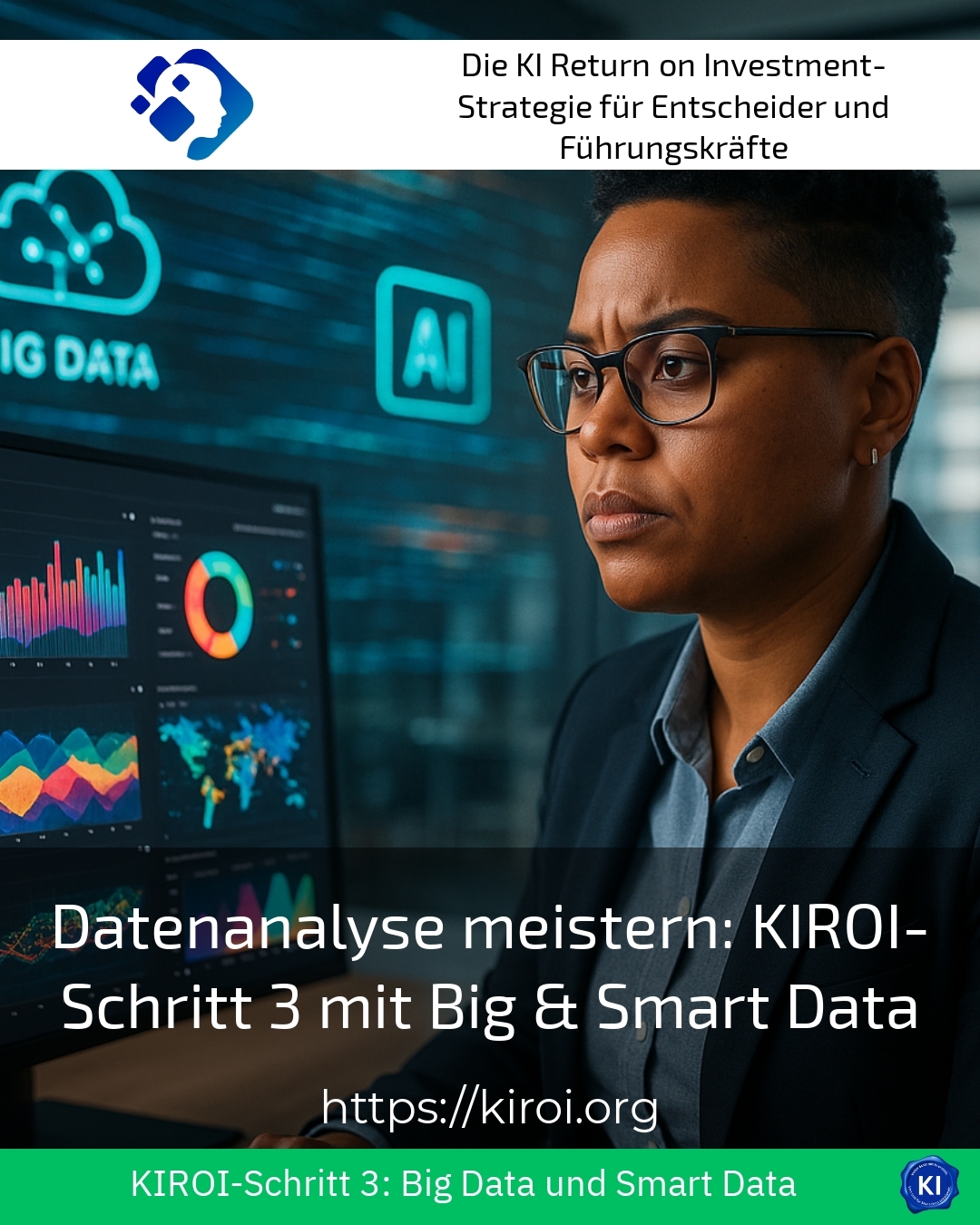In today's business world, the correct use of data is crucial to a company's success. Effective data analysis enables companies to make informed decisions and optimise their processes. The challenge, however, is to gain meaningful insights from huge amounts of data. Big data and smart data play a central role here.
###
Big data and smart data: an overview
Big data refers to the analysis of large amounts of data, which can be structured and unstructured in different ways depending on the company. This data is often so extensive that it can no longer be analysed using conventional analysis techniques. Big data encompasses the five V's: volume, variety, velocity, veracity and value [1][9].
Smart data, on the other hand, is big data that has been cleansed, filtered and contextualised to provide relevant information that is essential for decision-making. By reducing volume and improving value, speed and veracity, smart data can be utilised faster and more effectively [1][8].
###
Data analysis - KIROI step 3
The third step of KIROI centres on data analysis. Here, the collected data is analysed in depth in order to gain valuable insights. This is done by using advanced analysis techniques that make it possible to turn big data into smart data [3][4].
A crucial step in data analysis is filtering and cleansing the data. By removing irrelevant information and standardising the data, companies can focus on the essential aspects and thus make better decisions [3].
###
Practical approaches to data analysis
Companies often use machine learning to efficiently evaluate data and recognise patterns. This technology makes it possible to analyse large volumes of data and gain valuable insights without the need for data experts [1][6].
Another important aspect is the integration of big data and smart data. By combining these two approaches, companies can utilise the bandwidth of large volumes of data as well as specific, action-oriented information [4].
An example from the retail industry shows how a leading company used big data analytics to optimise both inventory and sales figures. By analysing customer behaviour patterns and sales trends, the company was able to reduce overstocking by 20 % and increase sales by 15 % [4].
BEST PRACTICE with one customer (name hidden due to NDA contract)A manufacturer used IoT sensors and artificial intelligence to monitor the performance of its machines in real time. This resulted in a 30 % reduction in downtime and a 25 % improvement in production output.
###
Data analysis for greater efficiency
Effective data analysis helps companies to optimise their operational processes and make strategic decisions. With smart data, companies can tackle specific problems faster and more precisely, which in practice often results in improved product quality, reduced operational risks and targeted marketing strategies [6][8].
In the manufacturing industry, for example, companies can use data analysis to optimise machines and processes, predict the production balance and ensure product quality [2].
###
Benefits of data analysis
The utilisation of data analysis to support strategic decisions is crucial. By implementing the findings from data analysis, companies can optimise their processes in a targeted manner, which can lead to sustainable growth and competitive advantages [3][4].
My analysis
To summarise, effective data analysis has become an integral part of a company's business strategy. Through the targeted use of big data and smart data, companies can not only work more efficiently, but also make more informed decisions. The correct implementation of data analysis is crucial to gaining a competitive edge and surviving in the market in the long term.
For companies that want to develop further in this area, it makes sense to rely on experienced partners who can optimally support the integration of big data and smart data. This enables them to fully utilise the benefits of data analysis and effectively pursue their business goals.
Further links from the text above:
Big data vs. smart data - Dataversity
Big and smart data - from statistics to data analysis - DGQ
5 Ways to Turn Big Data into Smart Data | Gate6
Big Data vs. Smart Data: Key Insights for Operational Optimisation
Big Data vs. Smart Data: Is More Always Better? - Netconomy
Difference Between Big Data and Smart Data - Esa Automation
Big Data Versus Smart Data - LexisNexis
For more information and if you have any questions, please contact Contact us or read more blog posts on the topic Artificial intelligence here.















